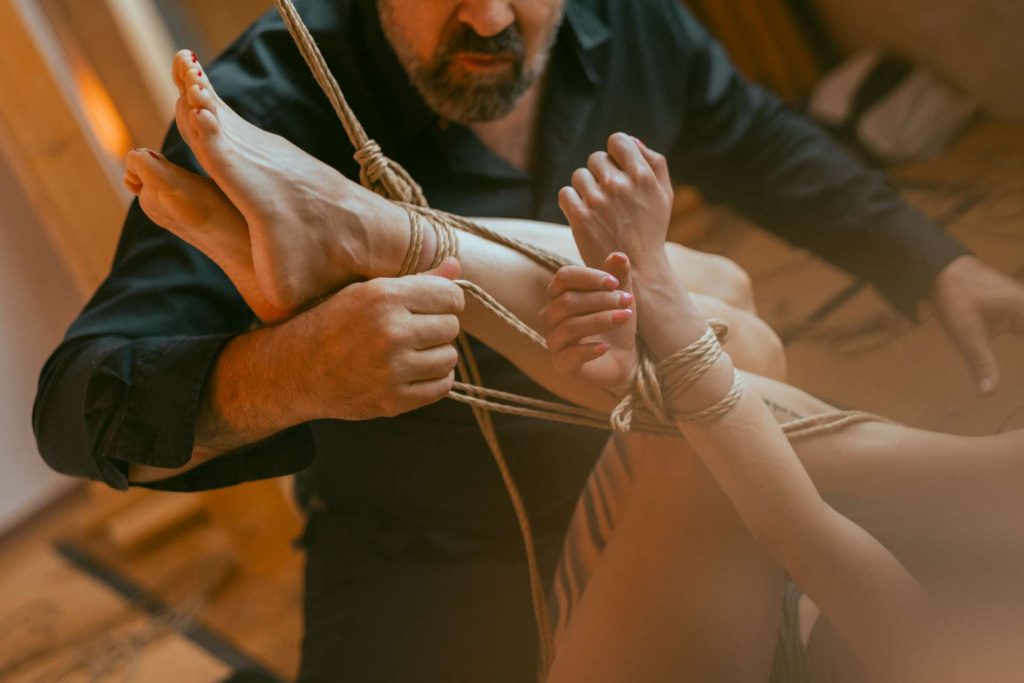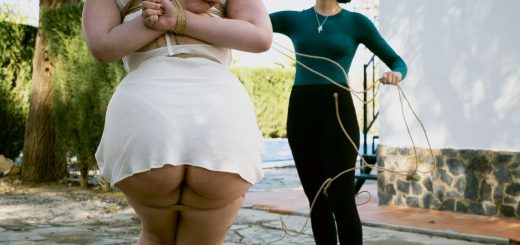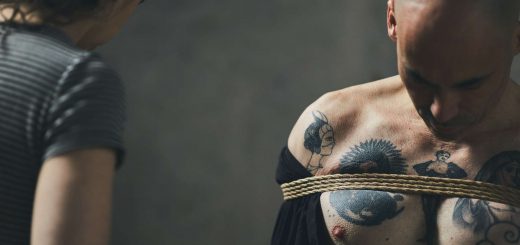Stuart & AliceMissWunderland – Announcing presenters
Stuart began his journey with ropes in 2014. For several years, he eagerly studied with many different teachers, learning a lot yet not finding his own voice in rope. In recent years, he has focused on Naka-style semenawa and later on aibunawa. Today he ties aibunawa with one hand and semenawa with the other, yet ties with both hands – incorporating aspects of each style into rope sessions.
Alice has been an integral part of the European rope community for more than ten years. She is well known for her philanthropic work as resident Glitter Fairy for any event she attends. When not glittering others, she enjoys being a shibari house cat – just there, not doing much except getting tangled in ropes.
Find out more about Stuart at his Instagram.
Workshops
Exploring the Yukimura Gote
(Workshop level: L3)
European shibari practitioners are generally taught that takate kote requires precise tension and specific frictions, and should be done quickly and efficiently to prepare the person in ropes for what’s to come.
In contrast, the act of tying Yukimura-sensei’s gote can be considered a seduction, with every wrap an opportunity to tantalize or torment our partner.
Given that Yukimura-ryu is almost entirely a floor-based tying style, the Yukimura gote is considerably less structured than gote / takate kote variations used in suspension / predicament oriented styles.
This class will present the basic two-rope gote, followed by a floor-based version of kata-ashi – appropriate for sensual / erotic play – or a seated M-shape.
Requirements: Prior experience with some form of gote / takate-kote. Comfortable tying y-hanger and locking off suspension lines. 6 ropes, ideally 4-5mm x 8m.
Taming the Beast
(Workshop level: L3)
This class will present kemono-shibari (“beast tie” in Japanese), one of the fundamental patterns of Yukimura-sensei’s aibunawa practice.
Participants will learn Yukimura’s variations on single-column and double-column ties (usually called “anchor” and “cuff” by students of aibunawa), and how to use them to craft a simple partial suspension using only a few ropes.
We will also learn how to move our partner once the partial suspension is achieved, for the enjoyment of the audience (real or implied).
As is common in the practice of aibunawa, there is space to play with shame through exposure.
Requirements: Single-column tie. 3 ropes, ideally 4-5mm x 8m.
Ryote: “Tying with Both Hands”
(Workshop level: L2-3)
Ryōte can be used to express the concept of “both hands”. Sometimes I use this term to describe the way I tie, because I like to say:
With one hand I tie aibunawa, and with the other I tie semenawa. Yet I tie with both hands.
Yukimura-ryu is commonly perceived as a soft style, because of its common name of aibunawa, or “caressing rope”. Recently in Europe, people tend to hear semenawa – “torment rope” and think “Naka-style”. There is a common understanding that these are conflicting styles.
I wish to share a different perspective – that ‘aibu’ and ‘seme’ can be viewed as complementary energies rather than contradictory styles. Within the context of a single session, we can combine soft and hard, caressing and torment.
Requirements: Single-column tie, double-column tie, some form of gote / takate-kote. Comfortable tying y-hanger and locking off suspension lines. 4-6 ropes, ideally 4-5mm x 8m.
Moving (with) your Partner
(Workshop level: L1-3)
Aibunawa is a grounded shibari practice, in the sense that most sessions occur with both people involved spending most of their time on the floor.
This class will explore floor-based techniques for moving your partner, both physically and emotionally, and will help us to better understand how to use space and distance for emotional impact.
Topics will likely include:
- maai (間合い) – the concept of “proper distance in the proper moment”
- how and where to sit
- a few approaches to breaking seiza
- use of nawajiri to apply both subtle and powerful energy to our partner.
Requirements: Single-column tie. 1-2 ropes, ideally 4-5mm x 8m.







